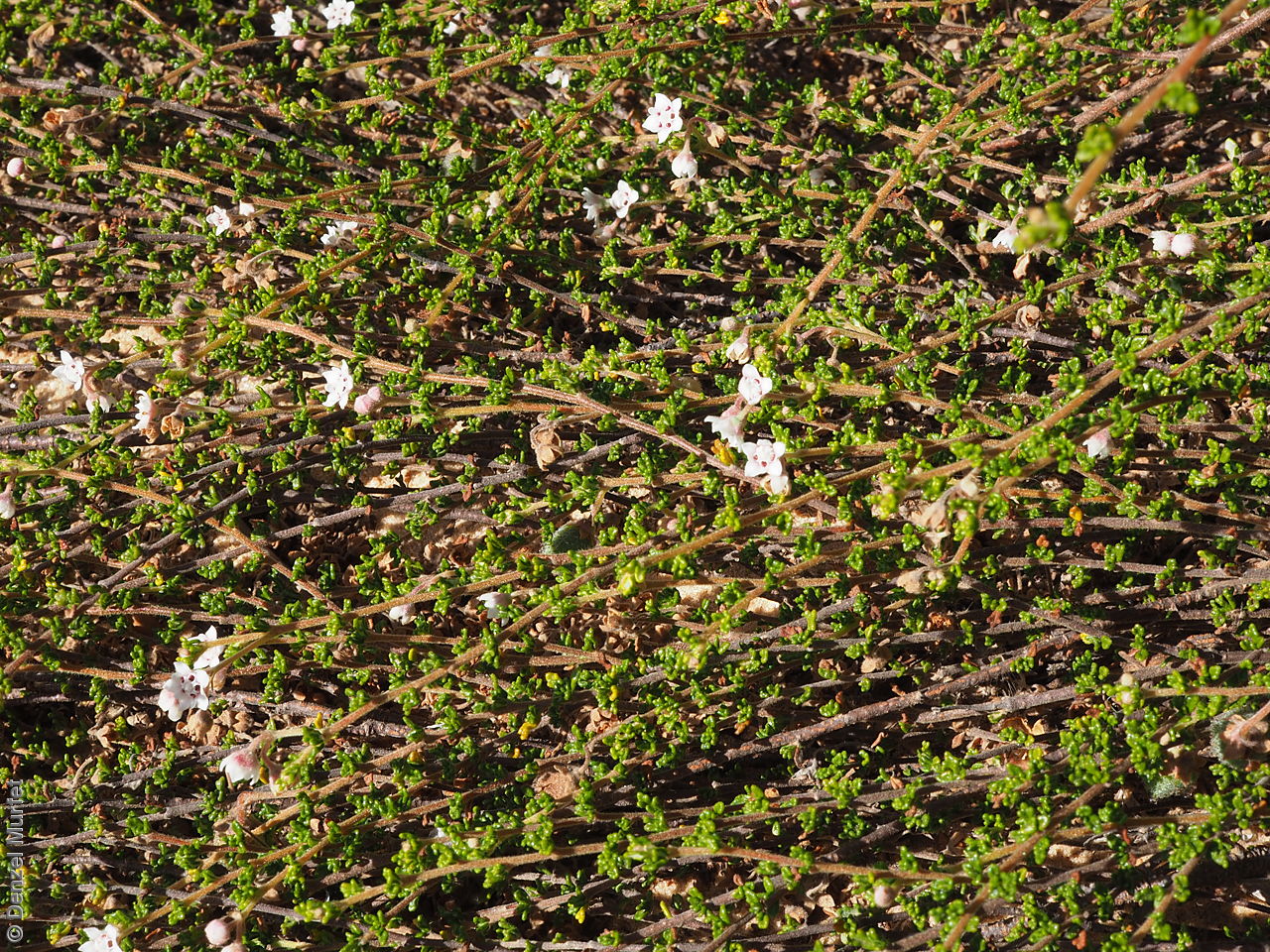
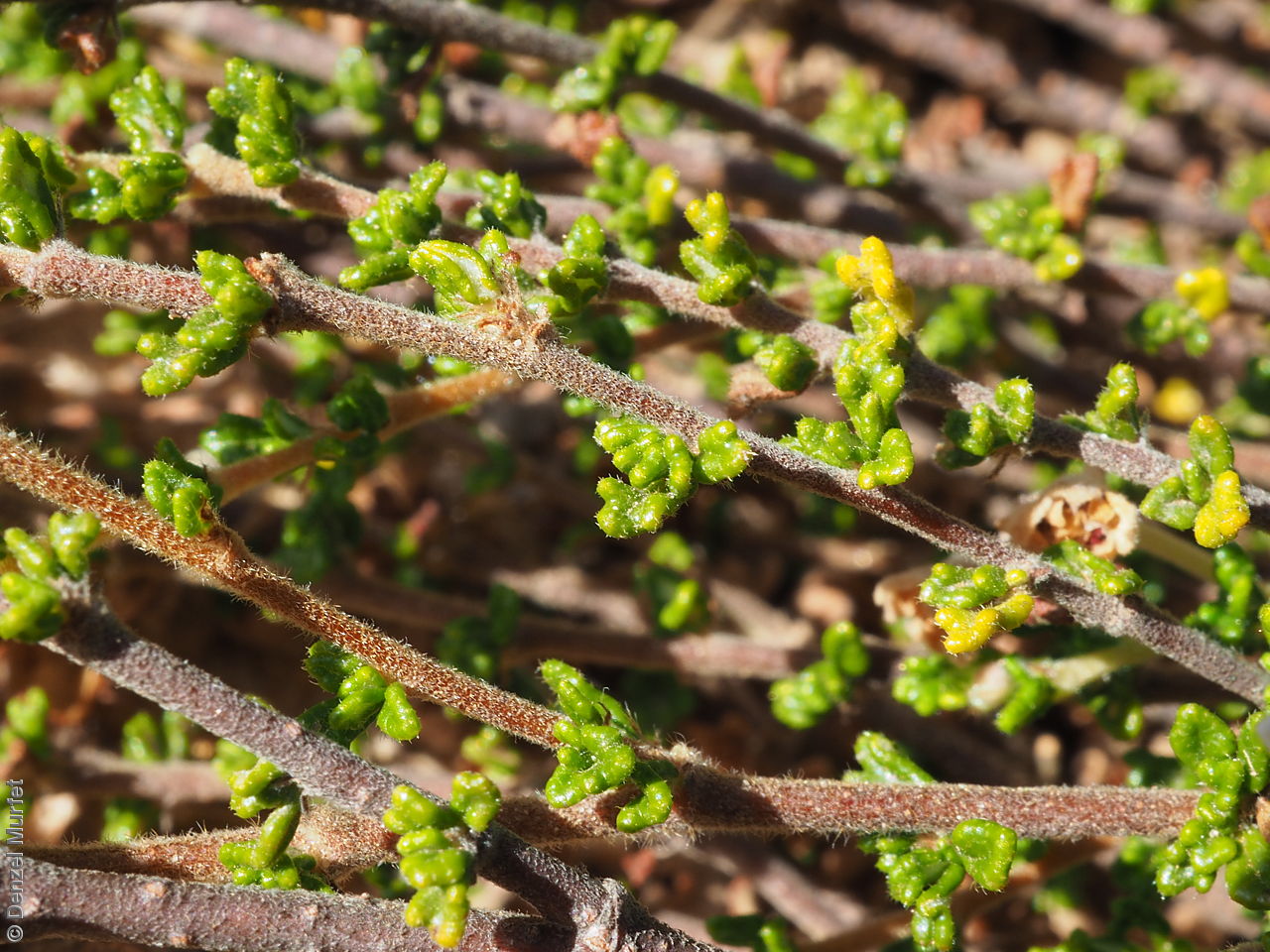
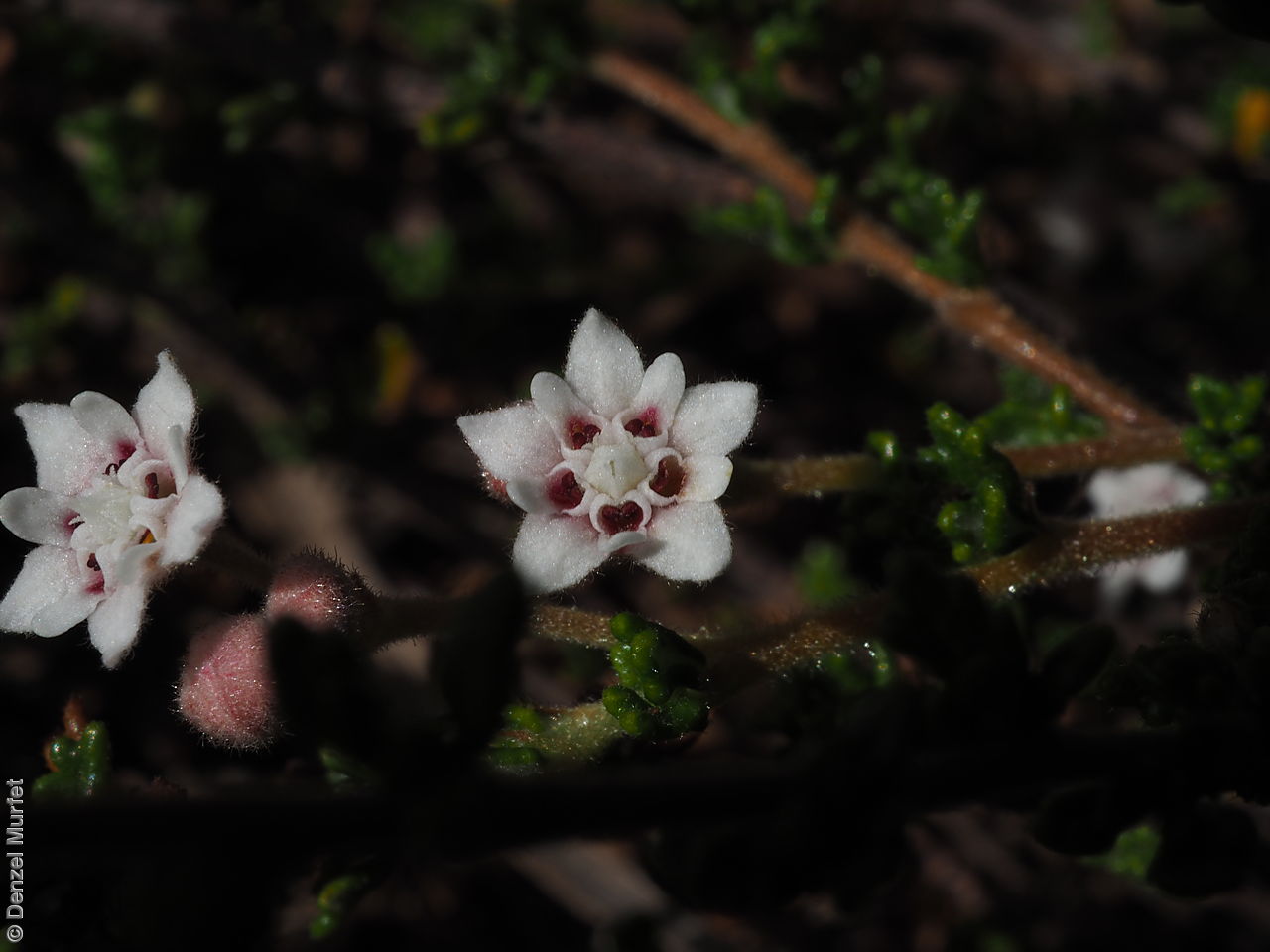
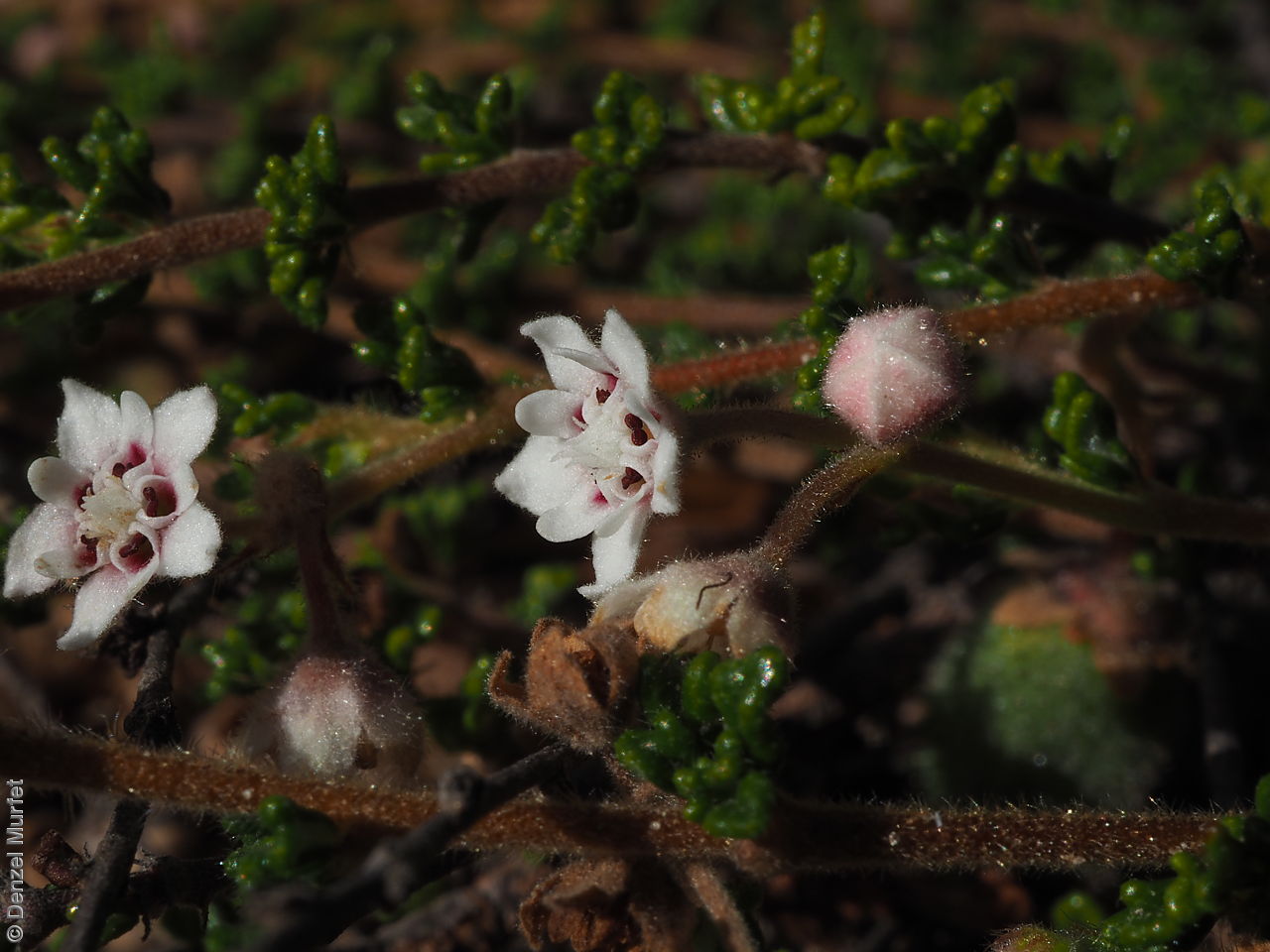
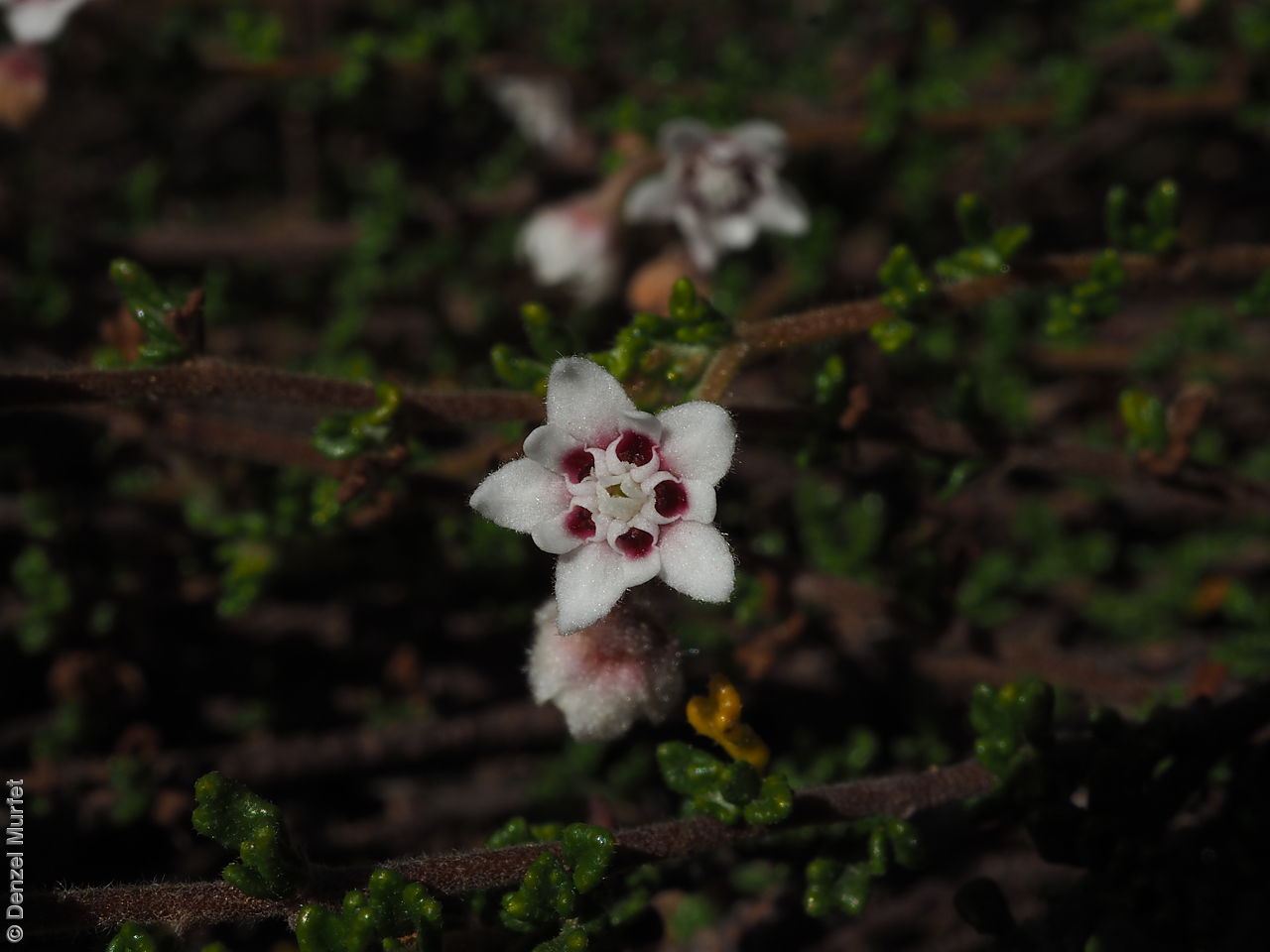
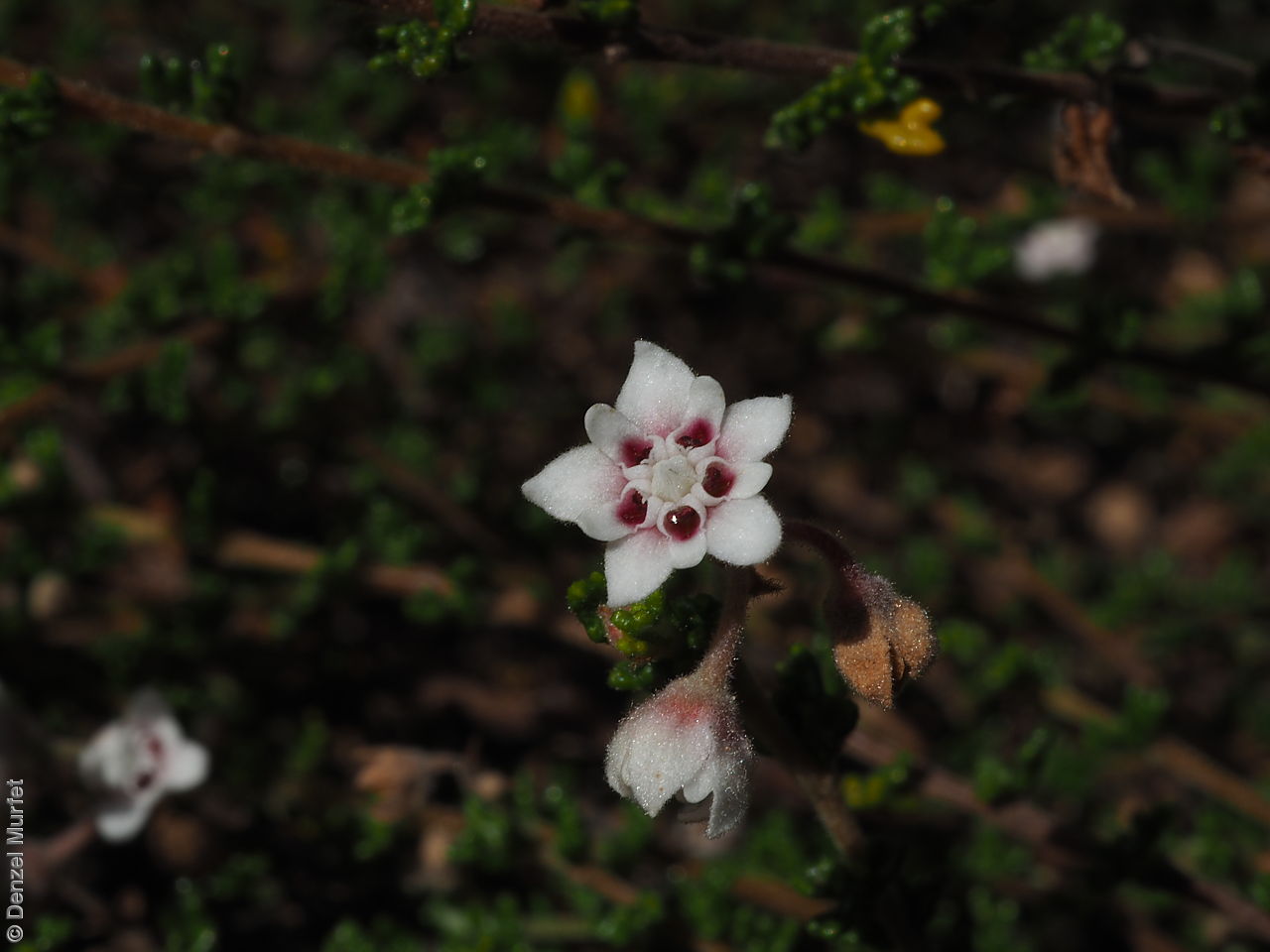
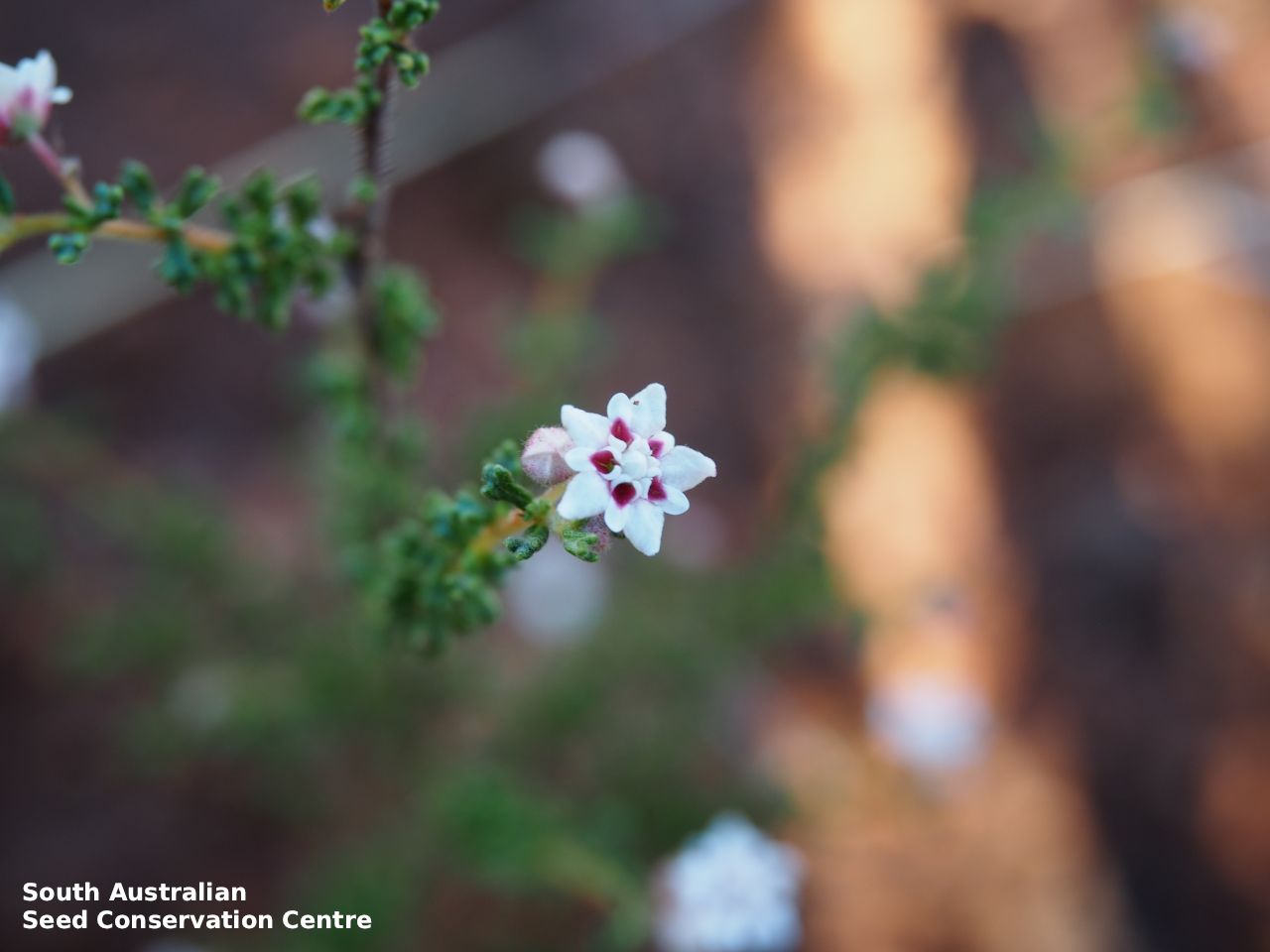
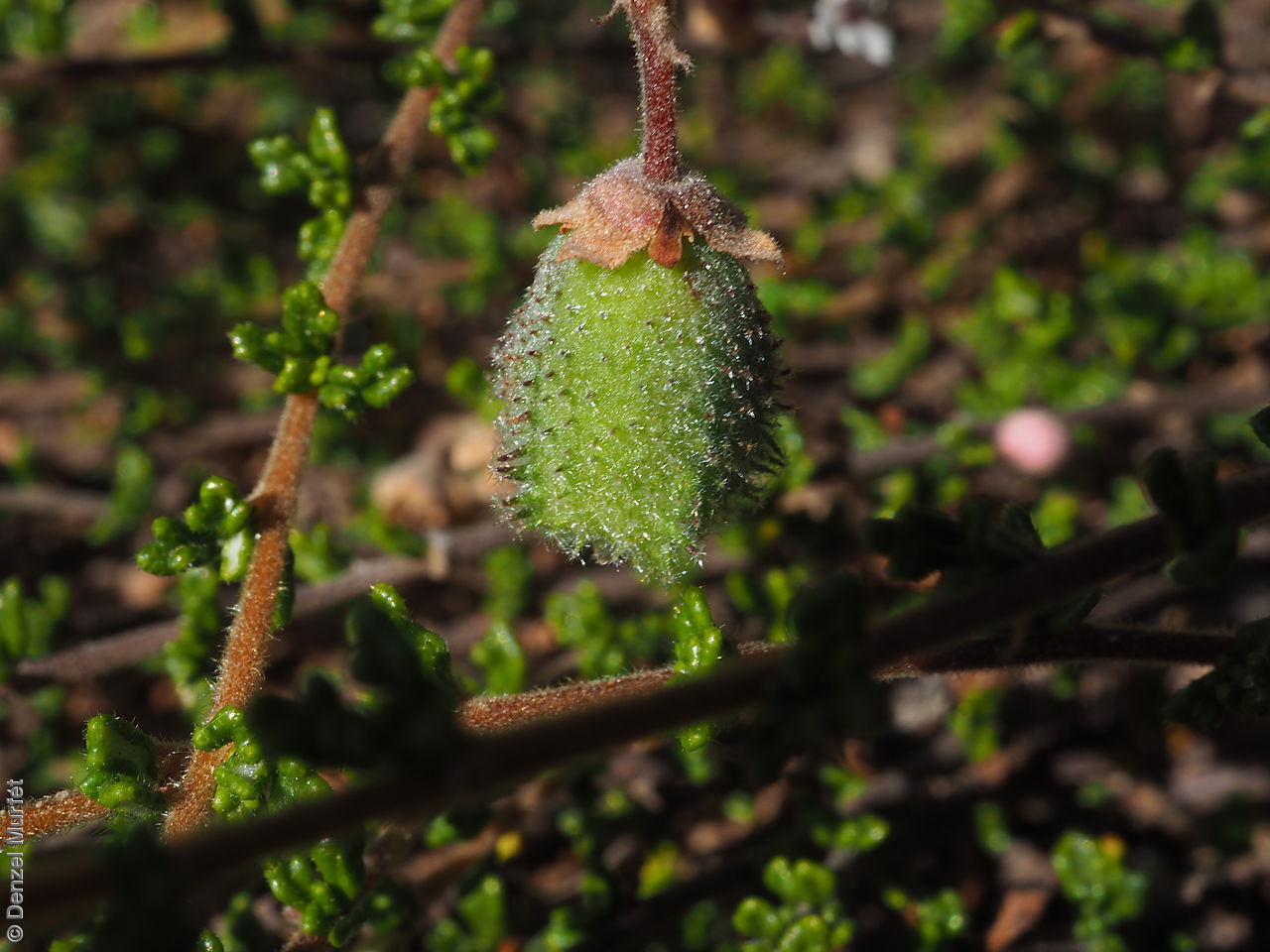
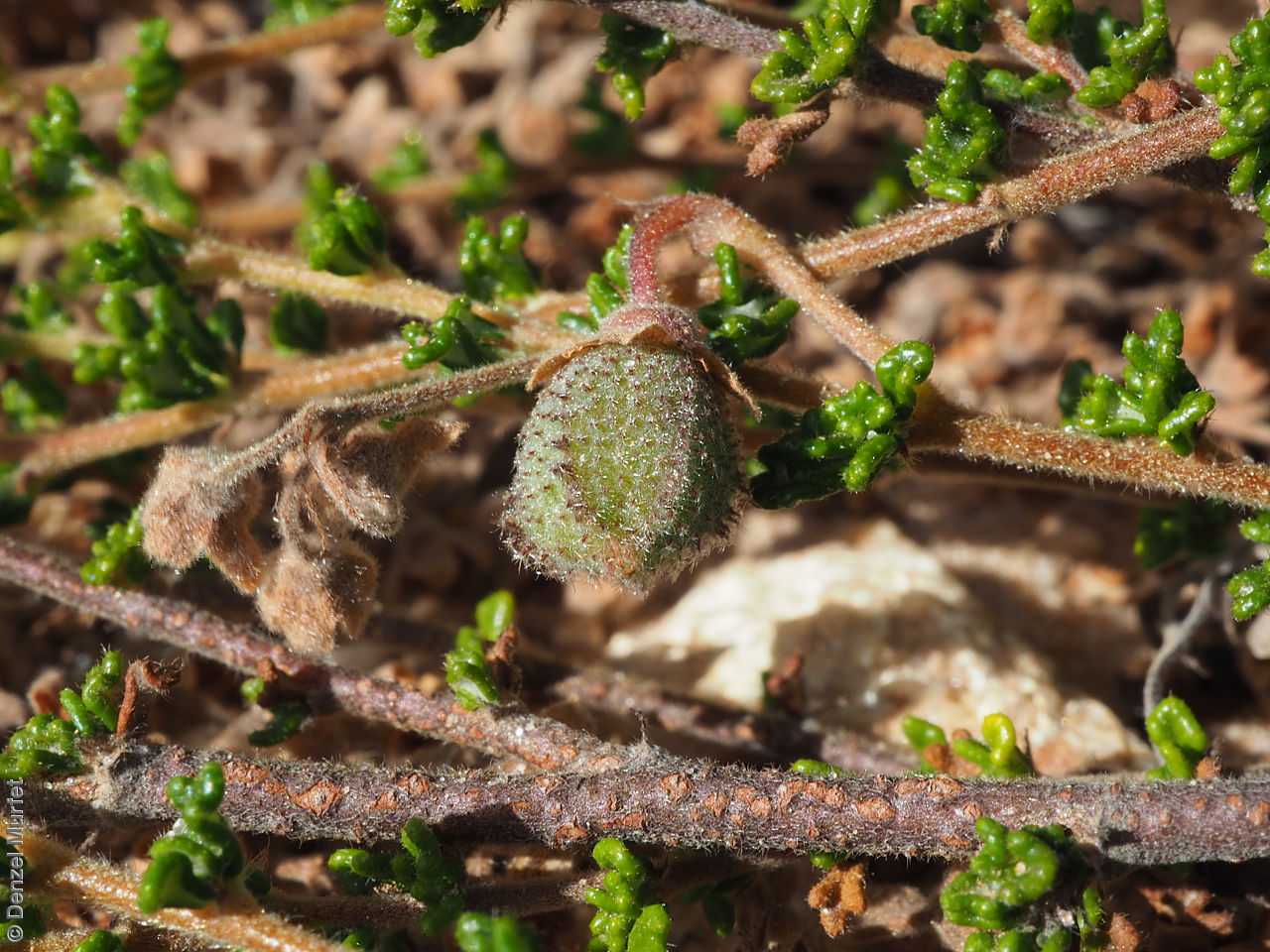
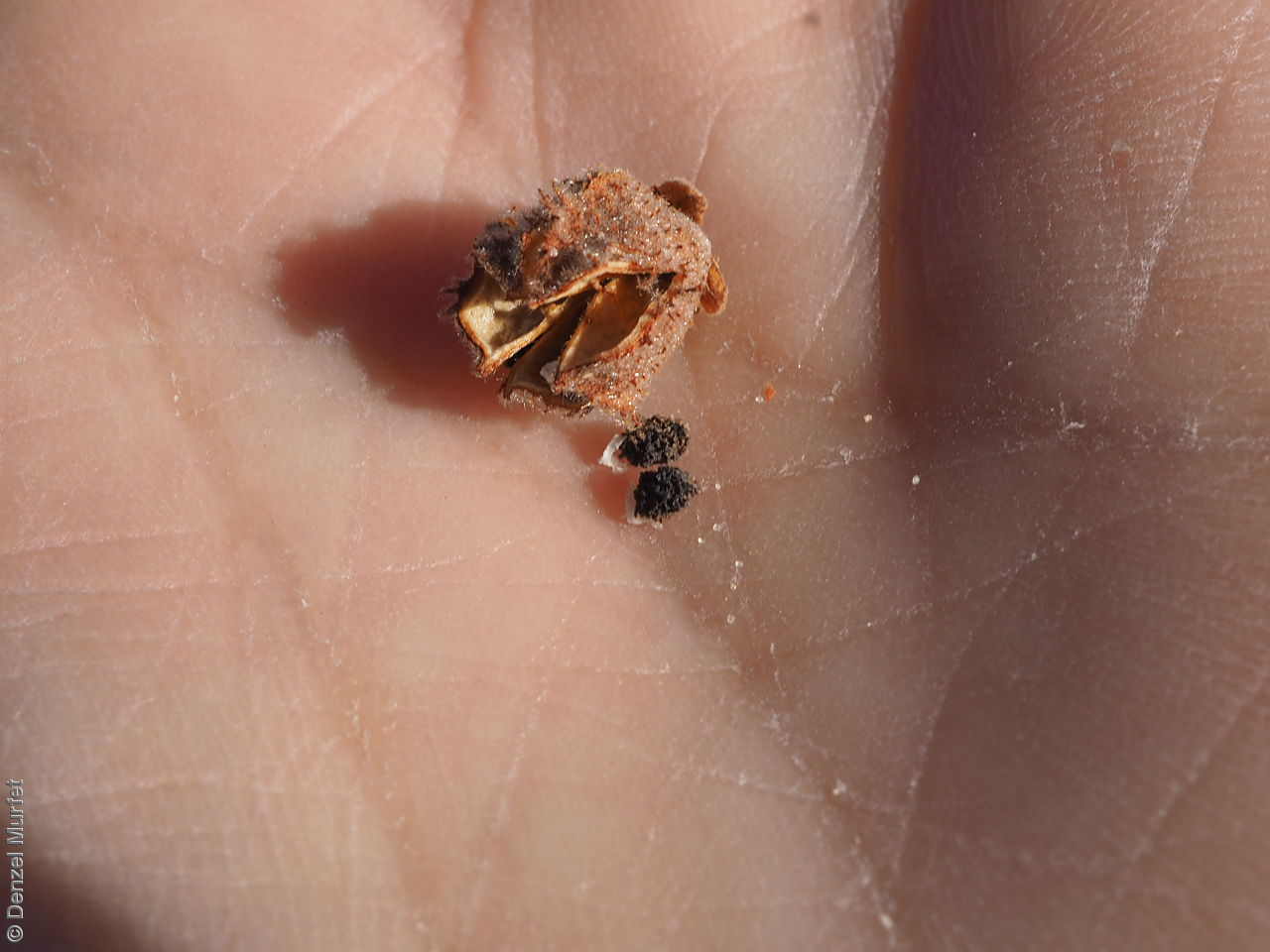
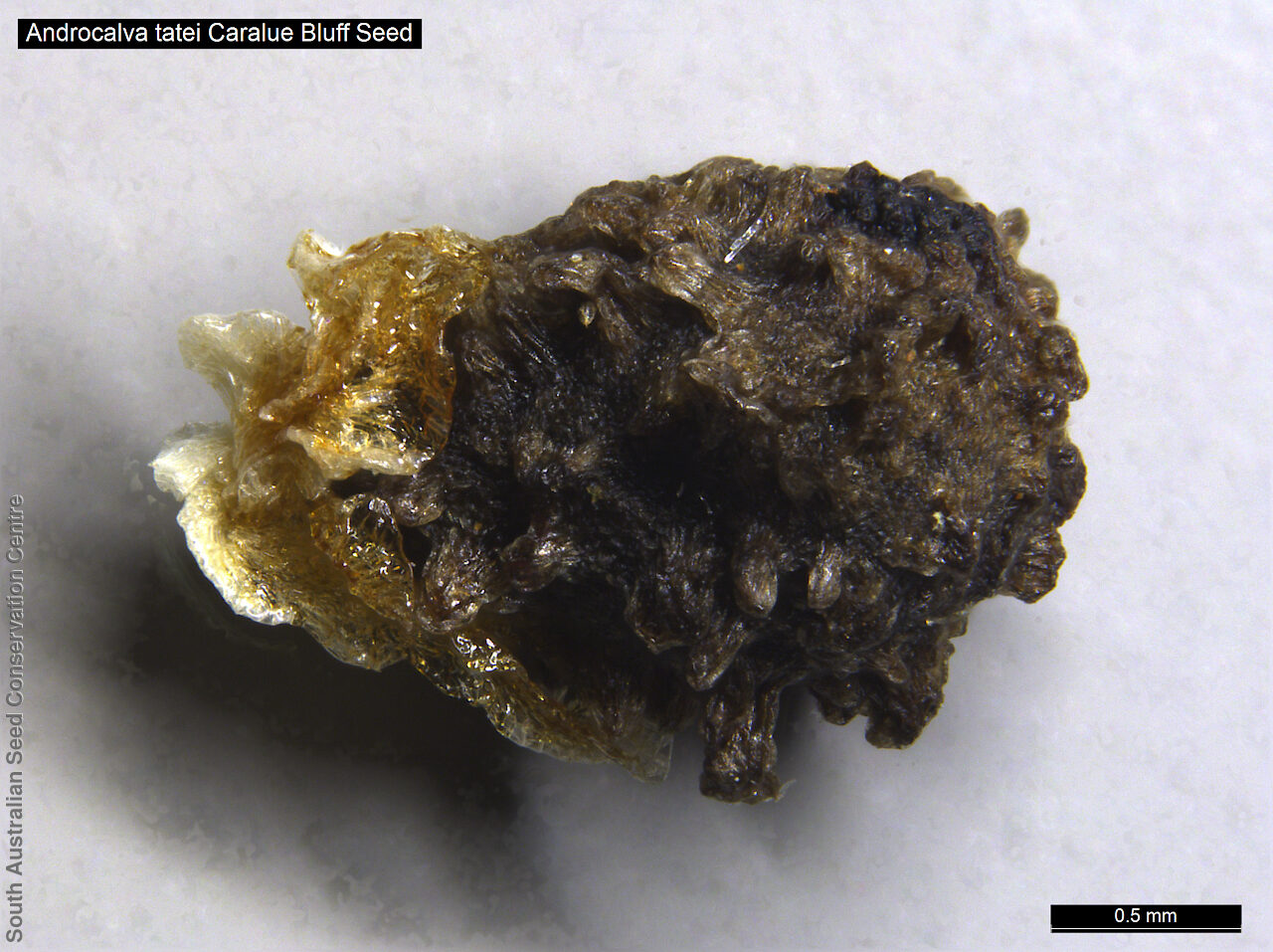
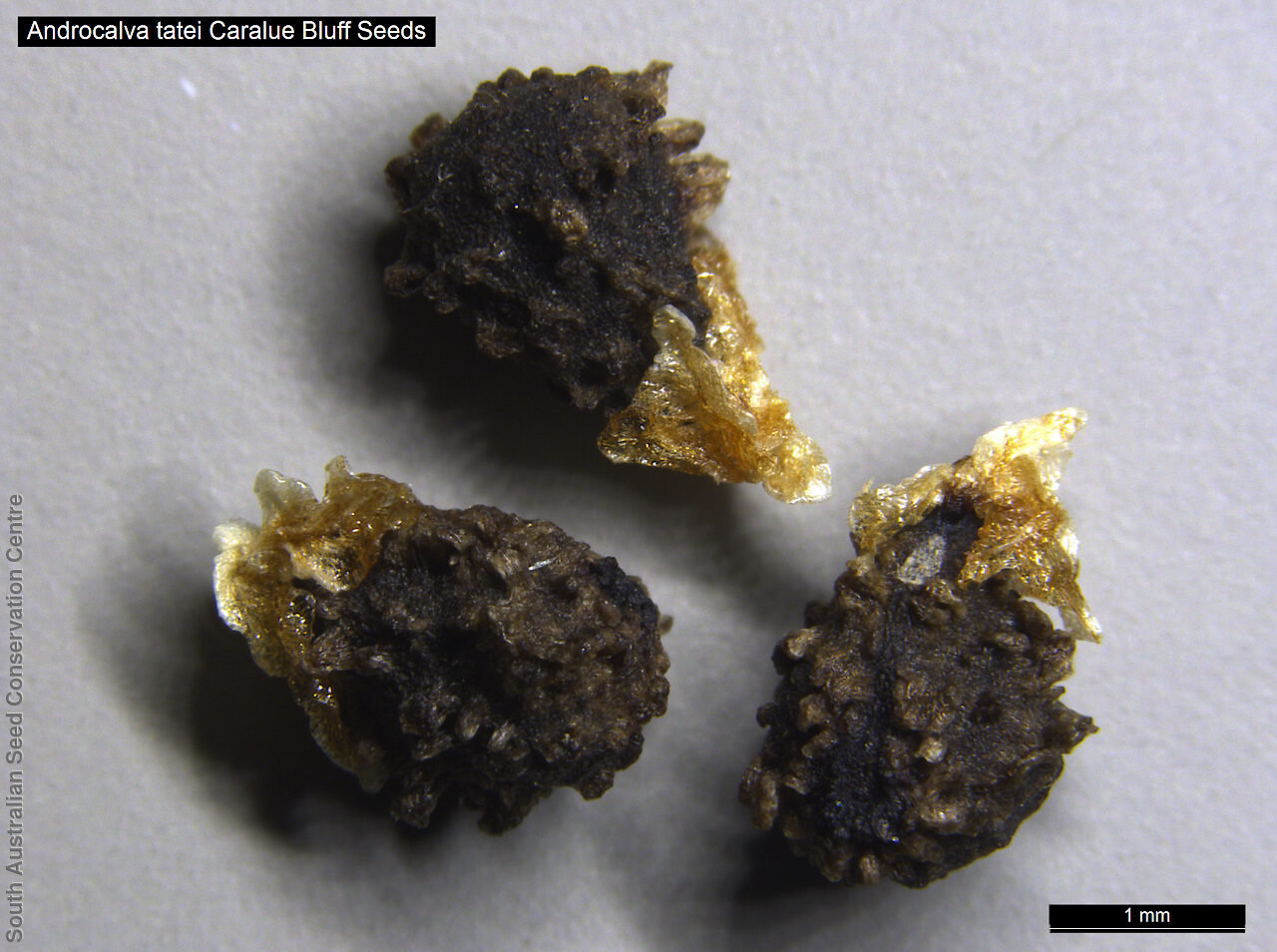


Botanical art
Prior names
Commersonia tatei
Etymology
Androcalva from the Greek 'andros' meaning a male and 'calvus' meaning bald, hairless; referring to the glabrous staminodes present in this genus. Tatei named in honour of Ralph Tate (1840�1901),professor of natural sciences, University of Adelaide, geologist and naturalist in South Australia
Distribution and status
Found only on Eyre Peninsula in South Australia, growing in low heath, or open mallee heathland or shrubland, often with Triodia, on white or red sand, or laterite orironstone gravel, or in sandy foothills of a granite bluff. It is often recorded in disturbed areas such as road verges or regrowth areas. There is also a disjunct population in the Murray Sunset National Park in Victoria.
Herbarium region: Eyre Peninsula
NRM region: Eyre Peninsula
AVH map: SA distribution map (external link)
Plant description
Flowering between August and February
| Location | No. of seeds (weight grams) | Number of plants | Date collected | Collection number Collection location | Date stored | % Viability | Storage temperature |
|---|---|---|---|---|---|---|---|
| MSB | 2,100 (3.42 g) | 70 | 15-Oct-2007 | TST194 Eyre Peninsula | 95% |
Number of plants: This is the number of plants from which the seeds were collected.
Collection location: The Herbarium of South Australia's region name.
% Viability: Percentage of filled healthy seeds determined by a cut test or x-ray.